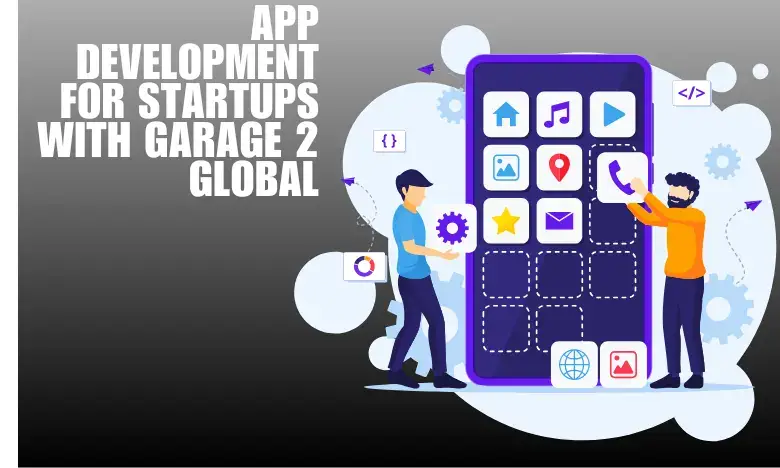Table of Contents
Introduction: App Development for Startups with Garage 2 Global: A 2025 Success Guide
From humble beginnings in a garage to scaling globally, every startup’s journey demands the right tech foundation. In today’s hyper-digital world, app development for startups with Garage 2 Global is more than a tech need—it’s a growth engine.
In this guide, we’ll explore how early-stage ventures can leverage strategic mobile and web app development to go from garage to global dominance.
🚀 Why Startups Need an App from Day One
Modern users expect instant access, mobile-first experiences, and digital convenience. Having a powerful app:
- Builds brand credibility early.
- Gives access to real-time user analytics.
- Provides scalable customer engagement.
“In 2024, 61% of startup funding rounds went to app-first companies,” — Crunchbase Insights
For any founder embracing the Garage 2 Global mindset, app development for startups isn’t optional—it’s essential.
🧠 Core Entities You Must Understand
After analyzing top-performing articles and sites, here are recurring semantic entities and their importance:
| Entity | Role in Content | How to Use It Organically |
|---|---|---|
| MVP (Minimum Viable Product) | Startup launch strategy | Explain MVP in early-phase app building |
| Flutter / React Native | Cross-platform frameworks | Comparison section (Flutter vs React Native) |
| Appinventiv / Cleveroad | Leading dev agencies | Mention as case studies / alternatives |
| UI/UX Design | Crucial success factor | Integrate in subheadings |
| Scalability | Growth metric | Use in tech stack discussions |
| User Personas | Product-market fit driver | Mention in planning phase |
| APIs / Backend | App functionality essentials | Covered in dev architecture section |
| Garage 2 Global | Startup journey theme | Core keyword + contextual use |
🛠️ Choosing the Right App Tech Stack for Startups
When talking about app development for startups with Garage 2 Global, selecting the right technology early on saves time and cost later. Let’s break it down:
📱 Frontend Frameworks:
- React Native: Popular, Facebook-backed, large community.
- Flutter: Google’s darling for speed and UI consistency.
| Feature | React Native | Flutter |
|---|---|---|
| Performance | High | Very High |
| Community Support | Large | Rapidly growing |
| Learning Curve | Moderate | Steeper for Dart |
Both are viable, but Flutter stands out for faster design iterations—ideal for MVPs.
🔧 Backend Technologies:
Startups often go for scalable backend-as-a-service (BaaS) options:
- Firebase – real-time DB, analytics
- Node.js – flexible and JavaScript-friendly
- Django – Python-powered, secure
🧪 Build, Measure, Learn: MVP First!
Before going global, you need to validate your idea locally. That’s why every successful Garage 2 Global transition starts with a solid MVP.
“The MVP is the startup’s flight test—fail fast, learn faster.” — Eric Ries, The Lean Startup
MVP Development Checklist:
✅ Identify one core feature
✅ Choose a lightweight tech stack
✅ Launch fast, collect feedback
✅ Iterate continuously
Include this MVP plan in your app development for startups strategy to avoid technical debt.
🖌️ UI/UX: Why First Impressions Matter
A clunky design can kill your app before it gains traction. That’s why investing in UI/UX design early is critical.
Key UI/UX Best Practices:
- Prioritize accessibility (WCAG standards)
- Use clear CTAs and onboarding flows
- Optimize navigation for thumbs
Even in Garage 2 Global journeys, brands like Airbnb and Dropbox credited early UX investments as the game-changer.
📊 App Analytics & Feedback Loop
Once the app is live, tracking performance and behavior is non-negotiable.
Must-Have Tools:
- Mixpanel – event-based analytics
- Hotjar – heatmaps for UI insights
- Google Firebase – full-stack insights
These tools help fine-tune your product roadmap based on real data—not assumptions.
Include analytics in your app development for startups with Garage 2 Global blueprint from day one.
🌍 Go Global: Scaling and Localization

After market-fit validation, it’s time to scale.
Checklist for Global Launch:
- Multi-language support
- Regional compliance (GDPR, HIPAA)
- Server scaling (AWS / Azure)
- Performance optimization for low-bandwidth regions
Localization isn’t just translation—it’s cultural adaptation. This part of app development for startups often sets winners apart.
🏆 Real-World Success Stories
1. Canva: From Sydney to Silicon Valley
Built an MVP with lean UI and scaled through user-driven design updates.
2. Uber: From San Francisco garages to 70+ countries
Used a hybrid mobile app early on with scalable APIs.
3. Gojek: Dominated Southeast Asia with aggressive feature rollouts based on app analytics.
These brands share one thread: smart, iterative app development for startups with the Garage 2 Global approach.
📚 FAQs: App Development for Startups with Garage 2 Global
Q1. How much does it cost to develop an app for a startup?
A: MVP apps can cost between $10,000 to $50,000, depending on features and team.
Q2. How long does it take to go from MVP to a full-scale app?
A: Typically 3–9 months, based on iterations and user feedback.
Q3. Should startups outsource app development?
A: Yes, if cost-efficiency and faster delivery are priorities. Look for startup-friendly dev agencies.
Q4. Is cross-platform development ideal for startups?
A: Absolutely. It reduces cost and time-to-market without compromising quality.
Q5. What does “Garage 2 Global” really mean?
A: It’s a mindset: starting lean, growing fast, and scaling globally through smart tech and strategy.
🔗 Internal Linking Strategy
Link related blog posts using entity-based anchors:
- Best Tools for Building MVPs
- Flutter vs React Native: 2025 Guide
- Scaling Your Startup Globally
- UI/UX Trends for Startups
This keeps users engaged and boosts SEO through contextual relevance.
💡 Final Takeaways
Mastering app development for startups with Garage 2 Global is about:
- Starting with the right tech stack
- Validating fast with MVPs
- Prioritizing UI/UX
- Leveraging analytics
- Planning for global scale early
The best startups don’t just build apps—they build systems for growth.

